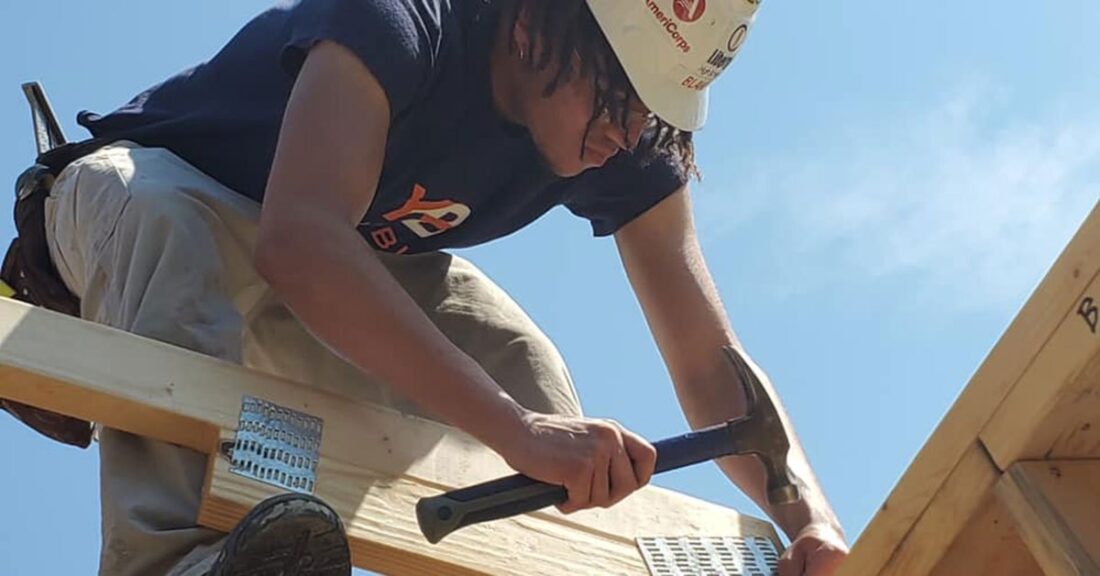Workforce Development Programs That Work for Youth With Justice-System Experience

Achieving stable employment is a critical milestone for youth and young adults on the path to adulthood. But young people who have been involved in the justice system — especially for serious offenses — can face significant barriers in finding and securing employment. Results from a national scan of workforce programs by the Urban Institute identify strategies that may help mitigate these challenges.
Key Findings from the National Scan
This research, funded by the Annie E. Casey Foundation, identifies common features of quality community-based workforce development programs serving youth and young adults with criminal or juvenile records.
Common Program Features
Some of the top-cited features identified include:
- prioritizing the ability of staff to work with participants of different racial and ethnic backgrounds;
- training staff on positive youth development strategies; and
- coordinating across a wide range of partners including employers, probation officers and judges.
Common Program Offerings
The five most frequently reported program offerings aimed at helping young people with justice system involvement were:
- job search assistance;
- career readiness;
- employer connections;
- career planning; and
- job coaching.
Marks of a Supportive Infrastructure
Program models that provided a supportive infrastructure for young people with criminal records shared the following characteristics:
- Took individualized, developmentally appropriate approaches to meet young people where they were and built on their strengths.
- Employed staff who understood young people’s experiences with trauma, mental health issues and gender differences.
- Took proactive steps to help staff members connect with participants based on similar life experiences, such as coming from the same neighborhood or having a criminal record.
- Recognized that youth might need help satisfying their basic needs (like housing, food and child care) or establishing identification and bank accounts as part of workforce participation.
- Offered wage-subsidized internships, stipends for community service or transitional jobs.
- Time-limited, subsidized work experiences helped young people build skills and establish a work history necessary for employment while meeting their basic financial needs. Such paid opportunities are important, since these young people may have limited resources and lack the financial cushion needed to pursue unpaid opportunities.
- Connected with participants proactively, including via weekly check ins and direct outreach if communication stalls.
Promising Practices
The researchers also identified promising practices, including:
- allowing for program flexibility — such as program length — and individualizing support to align with a young person’s interests and goals;
- collaborating directly with employers and in response to the local labor market;
- being flexible with funding streams and requirements;
- collecting and disaggregating data to isolate program strengths and identify areas ripe for improvement; and
- partnering with policymakers, juvenile and criminal justice stakeholders, employers and direct service providers to foster youth success.
David E. Brown, a senior associate of the Casey Foundation, pointed out that some young people are juggling community service requirements, court-imposed fines and unresolved or outstanding warrants. “Justice-system involvement can be an obstacle course for young people,” he explains.
As Casey considers its next phase of investment in this area, the Urban Institute’s scan and report can help “identify organizations providing quality workforce development opportunities to youth and young adults charged with serious offenses,” says Brown. The research can also aid Casey in pinpointing “the kinds of organizational structures, partnerships and collaboration that are essential to helping young people with records succeed in the workforce.”
About the Scan
With a 2020 Casey Foundation grant, the Urban Institute conducted a scan of workforce and juvenile justice programs to document how they were delivering services to youth and young adults who have been adjudicated for or convicted of serious offenses. Using information gathered from a national survey and staff interviews at 15 community-based service organizations, the project aimed to identify efforts nationwide that effectively prepared 16- to 24-year-olds for the workforce while preventing further justice system involvement.
Following a review of relevant literature, the researchers identified a survey sample of 667 community-based workforce support organizations that either serve young people with a history of justice involvement or do not explicitly exclude them. From March to May 2021, 128 of the organizations from 41 states and Washington, D.C. responded to the survey. Among these organizations, 20 programs were selected to participate in semi-structured interviews, and providers from 15 of these programs completed interviews.
Related Resources
Debunking myths on the workforce innovation and opportunity acts youth program
Understanding the benefits of workforce exposure and career programming for young people
Creating educational and career pathways for young people






